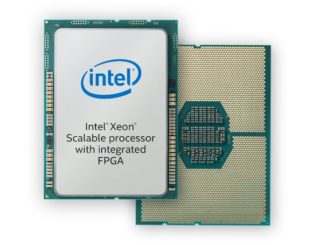
Much of the focus of the recent high-profile budget battle in Washington – and for that matter, many of the financial debates over the past few decades – has been around how much money should go to the military and how much to domestic programs like Social Security and Medicare.
In the bipartisan deal struck earlier this month, both sides saw funding increase over the next two years, with the military seeing its budget jump $160 billion. Congressional Republicans boasted of a critical win for the Department of Defense (DoD) that will result in more soldiers, better weapons, and improved training.
One military program that historically has flown under the radar but since the early 1990s has had its fingerprints on many parts of the branches in the military has been the DoD’s High Performance Computing Modernization Program (HPCMP), an initiative launched in 1992 after military and Congressional leaders issued a directive to modernize the supercomputing capabilities in the DoD’s research centers scattered around the country. The centers have used a combination of high performance computing systems, high speed networks, and advanced computational methods to develop precision military weapons, prepare aircraft for overseas deployments, combat terrorism, and conduct long range weather forecasts to help plan for military and humanitarian operations.
The HPCMP program, which in the last fiscal year had a budget of more than $222 million, has five DoD supercomputing centers that support DoD scientists and engineers in their work. The goal is to give DoD researchers the hardware and software tools they need to ensure the U.S. military continues to hold the technological edge in the world to keep ahead of rivals like China and Russia. Recently, the military reportedly has begun to use the compute capabilities in the HPCMP centers to leverage digital modeling with the aim of reducing the amount of time and money needed to design, test and build systems. Military engineers and scientists can use modeling to digitally test designs and performance before actual construction begins, and supercomputers are needed to churn through the massive amounts of data needed for modeling. Modeling has been used with the HPCMP supercomputers in a range of projects, from paring down the number of contract proposals to creating predictions early in the design phase of rotor improvements to the CH-47F Chinook helicopter.
The DoD’s supercomputing program comprises not only hardware but also networking and software. The core of the networking pillar is the high-speed Defense Research and Engineering Network (DREN) for research, engineering, and testing. The high capacity and low latency nationwide network connects not only the five HPC research centers but also other sites where government laboratories and test centers are located.
HPCMP is back in the news this week with the awarding of a $57 million contract to Hewlett Packard Enterprise to supply seven HPE SGI 8600 supercomputers to two sites. Four of the systems will be delivered to the Air Force Research Laboratory (AFRL) DoD Supercomputing Resource Center (DSRC) at Wright-Patterson Air Force Base in Ohio for use in research in such areas as hypersonics – the study of flight speeds of Mach 5 and higher where heating becomes an issue – and computational modeling of air, naval, and group weapons and platforms. Three other HPE systems will be installed at the Navy DSRC at the Stennis Space Center in Mississippi and will be used for helping to develop advanced weapons and for use with the Navy’s global weather modeling efforts.
The deal with the DoD is what HPE had in mind when it announced in 2016 that it was buying longtime HPC systems maker SGI for $275 million, a relatively small sum for a company that at one time was a major player in the supercomputer space but had lost significant ground over the past couple of decades as computing shifted to more industry standard, Intel-based systems and eventually was bought in 2009 by hyperscale system maker Rackable Systems for $42.9 million (which assumed the SGI name). HPE, which had such high-end systems as its Superdome lineup, saw SGI as a way to expand its presence in an HPC space that was changing rapidly with the rise of such technologies as GPU accelerators, data analytics, artificial intelligence and machine learning, and the cloud. In past years, the DoD through the HPCMP has bought supercomputers from U.S. vendors like Cray, SGI and IBM.
The SGI 8600, which was unveiled last year, is a liquid cooled petascale cluster system that is based on SGI’s ICE XA computer and is powered by Intel’s “Skylake” Xeon SP or “Knights Landing” Xeon Phi processors, and the Skylake Xeons can be coupled with Nvidia’s Tesla SXM2 GPU accelerators in the “Pascal” and “Volta” lines. The systems can scale up to 144 nodes per rack, and leverage HPE’s Hypercube interconnect technology for enhanced scaling up to 10,000 nodes. The systems being delivered to the DoD will be powered by 24-core Xeon SPs that leverage the chip maker’s Omni-Path 100 fabric interconnect and 12 petabytes of EXAScaler storage based on Lustre from DataDirect Networks. The four systems at the AFRL in Ohio will provide more than 7.3 petaflops of performance; the three in Mississippi will provide 6.8 petaflops.





Be the first to comment